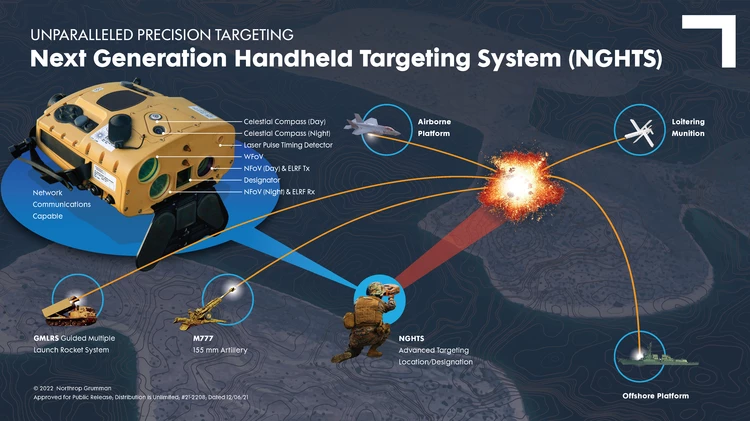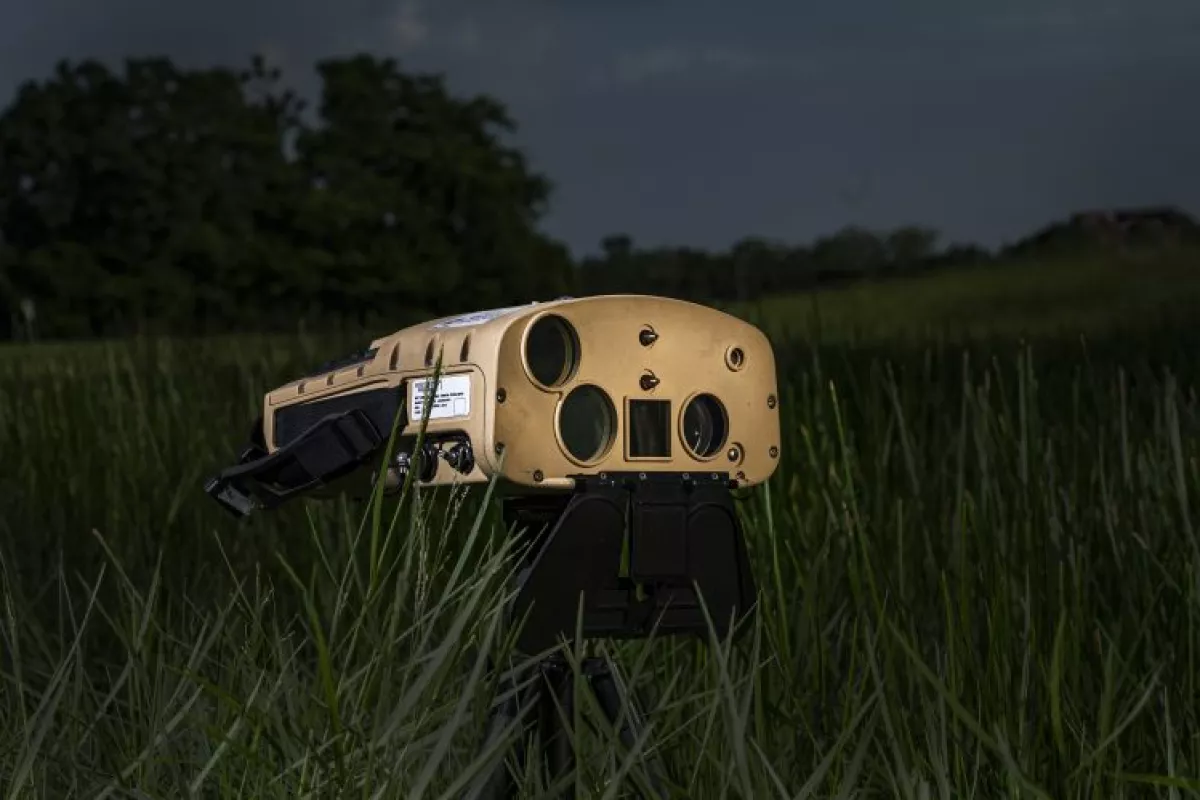The US Marine Corps has decided to purchase Northrop Grumman's all-in-one Next Generation Handheld Targeting System (NGHTS) that packs a suite of day/night targeting sensors in a 10-lb (4.5-kg) package and can operate in GPS-denied areas.
Portable targeting systems are vital to modern soldiers, who often must act as forward-deployed scouts for artillery or need to be able to call in heavy fire or air combat support. The problem is that no single system can work under all likely conditions. The other is that such systems are bulky and heavy, and combining several together can result in a gadget that is just one more thing to haul about. Worse, soldiers are often still required to work out the targeting coordinates and transmit them to base via field radio.
To address these concerns, Northrop Grumman's NGHTS combines four different sensors into a single package that is lighter and 60% smaller than previous devices. The NGHTS unit, which incorporates many parts that can be 3D printed in the field, combines the Marines' Portable Lightweight Designator Rangefinder, Joint Terminal Attack Controller Laser Target Designator, Enhanced Joint Terminal Attack Controller Laser Target Designator, and Thermal Laser Spot Imager systems.

NGHTS is built around a color day imager, a low-light imager, and a thermal imager for capturing images in total darkness. There is also a high-precision GPS receiver and a celestial compass that provides azimuth readings. That is, the angle between the north or south point on the horizon and the location where an imaginary circle passing through the location intersects the horizon. The clever bit is that NGHTS is designed to locate the sun or stars on power up to allow it to calculate the azimuth to within a fraction of a degree.
The sensors allow NGHTS to operate in daylight, night time, and in twilight, which often confuses targeting devices. It can also handle salt fog and temperature extremes, as well as vibrations and the effects of changes in altitude. It can directly transmit targeting coordinates to artillery units, missile batteries, aircraft, or ships at sea, or it can illuminate a target with a laser beam to guide in an attack at longer ranges than previous systems.
"NGHTS’ advanced technology will significantly enhance war fighters’ ability to safely complete their missions," said Bob Gough, vice president of navigation, targeting and survivability, Northrop Grumman. "NGHTS is lightweight and combines four systems into one portable device with state-of-the-art imaging, targeting, ranging, designating and networking. This compact, multi-sensor electro-optical/infrared device lightens Marines’ loads and keeps them connected while adding precision and safety to their missions."
Source: Northrop Grumman





